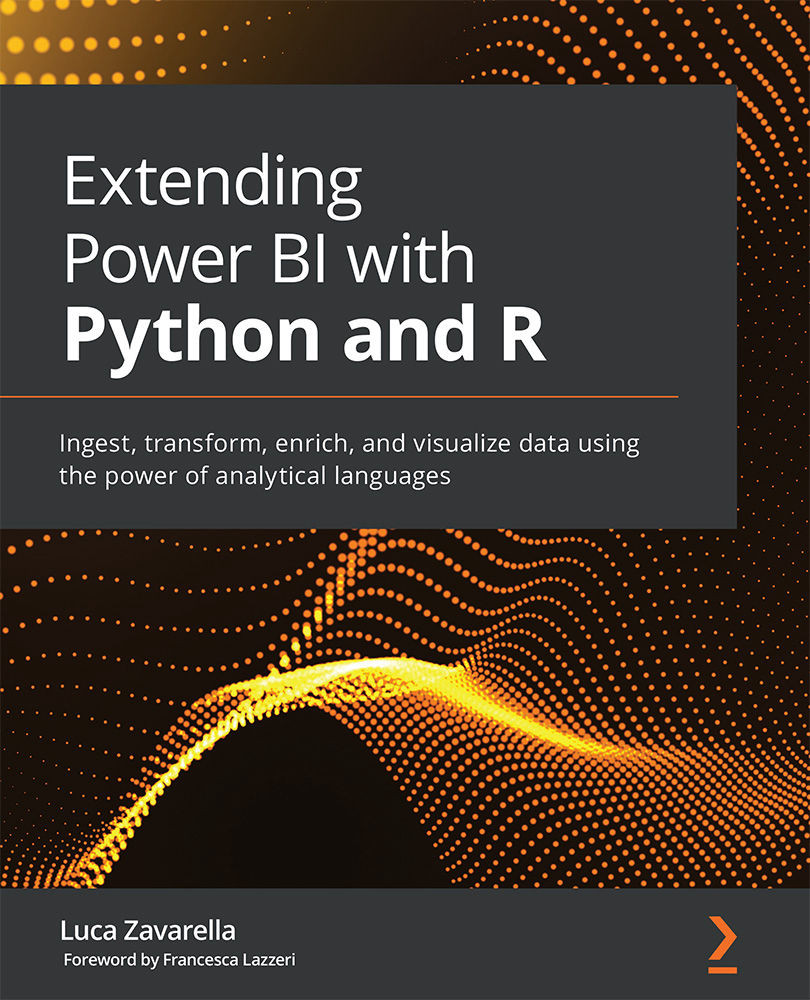-
Book Overview & Buying

-
Table Of Contents

Extending Power BI with Python and R
By :

Extending Power BI with Python and R
By:
Overview of this book
Python and R allow you to extend Power BI capabilities to simplify ingestion and transformation activities, enhance dashboards, and highlight insights. With this book, you'll be able to make your artifacts far more interesting and rich in insights using analytical languages.
You'll start by learning how to configure your Power BI environment to use your Python and R scripts. The book then explores data ingestion and data transformation extensions, and advances to focus on data augmentation and data visualization. You'll understand how to import data from external sources and transform them using complex algorithms. The book helps you implement personal data de-identification methods such as pseudonymization, anonymization, and masking in Power BI. You'll be able to call external APIs to enrich your data much more quickly using Python programming and R programming. Later, you'll learn advanced Python and R techniques to perform in-depth analysis and extract valuable information using statistics and machine learning. You'll also understand the main statistical features of datasets by plotting multiple visual graphs in the process of creating a machine learning model.
By the end of this book, you’ll be able to enrich your Power BI data models and visualizations using complex algorithms in Python and R.
Table of Contents (22 chapters)
Preface
Section 1: Best Practices for Using R and Python in Power BI
 Free Chapter
Free Chapter
Chapter 1: Where and How to Use R and Python Scripts in Power BI
Chapter 2: Configuring R with Power BI
Chapter 3: Configuring Python with Power BI
Section 2: Data Ingestion and Transformation with R and Python in Power BI
Chapter 4: Importing Unhandled Data Objects
Chapter 5: Using Regular Expressions in Power BI
Chapter 6: Anonymizing and Pseudonymizing Your Data in Power BI
Chapter 7: Logging Data from Power BI to External Sources
Chapter 8: Loading Large Datasets beyond the Available RAM in Power BI
Section 3: Data Enrichment with R and Python in Power BI
Chapter 9: Calling External APIs to Enrich Your Data
Chapter 10: Calculating Columns Using Complex Algorithms
Chapter 11: Adding Statistics Insights: Associations
Chapter 12: Adding Statistics Insights: Outliers and Missing Values
Chapter 13: Using Machine Learning without Premium or Embedded Capacity
Section 3: Data Visualization with R in Power BI
Chapter 14: Exploratory Data Analysis
Chapter 15: Advanced Visualizations
Chapter 16: Interactive R Custom Visuals
Other Books You May Enjoy
